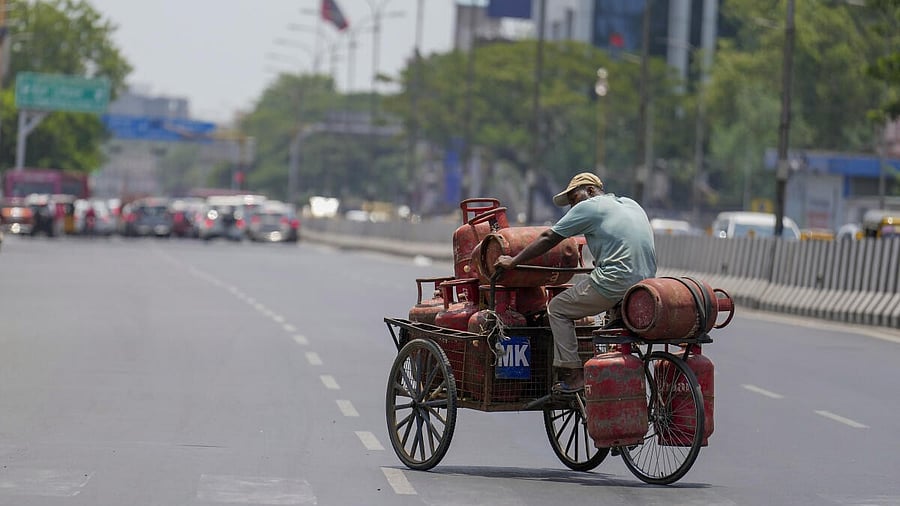
A man transports LPG cylinders during a hot summer day.
Credit: PTI photo
Mumbai: India’s tryst with heatwaves seems to have begun early in 2025 with Mumbai and other coastal areas of Maharashtra and Goa reporting high temperatures.
Meanwhile, coastal parts of Karnataka and Gujarat also witnessed hot and sultry weather conditions, with temperatures just short of ticking the threshold of heatwave and settling in the range of 35°C to 37°C.
The criteria for declaring heatwave for coastal stations in India is when the maximum temperature departure is 4.5°C or more above normal, provided the actual maximum temperature is 37°C or more.
“On February 26, Mumbai recorded a maximum temperature at 38.7 degree C, which was 5.9°C above the normal average. Some other regions in Coastal Maharashtra and Goa have also reported heatwaves, with the mercury soaring beyond 37°C.
Meanwhile, other parts like coastal parts of Karnataka and Gujarat also witnessed hot and sultry weather conditions, with temperatures just short of ticking the threshold of heatwave and settling in the range of 35°C to 37°C,” according to experts.
The India Meteorological Department (IMD), has predicted that hot and humid weather conditions will persist over the next couple of days, even if the heatwave recedes.
“It would not be wrong if we say that this year, the country has been witnessing one of the most dry winter seasons. In the absence of any weather systems, rains have remained in hiding,” said Mahesh Palawat, Vice President, Meteorology and Climate Change, Skymet Weather.
“An anti-cyclone has been persisting over Madhya Pradesh, which had been pushing warm easterly winds across the West Coast. These inland winds delayed the setting in of sea breeze and prolonged land breeze led to a rise in mercury. Besides this, high humidity levels due to the proximity of the coast increased the discomfort manifold, resulting in heatwave-like conditions,” he added.
“Anthropogenic climate change is escalating both meteorological and hydrological extremes worldwide, resulting in frequent weather record-breaking events. Currently, warmer-than-usual temperatures are being observed across all continents, indicating a relatively uniform global warming pattern. Unless we limit global warming by rapidly cutting
the emission of greenhouse gases, weather records will continue to break frequently,” said Dr Akshay Deoras, Research Scientist, National Centre for Atmospheric Science and the Department of Meteorology, University of Reading, United Kingdom.
According to the Climate Shift Index (CSI) by US based weather agency Climate Central, the last three day temperatures (Feb 25-27) in Panaji, Goa were made at least five times more likely by human-caused climate change. Similarly, temperatures in Mumbai during the same time frame were at least three times more likely due to global warming.
During the day, when the land heats up more quickly than the water, cooler air from the sea (sea breeze) moves inland to restore balance.
Similarly, due to the high specific heat of water, the sea takes longer to cool after sunset. At night, cooler air from the land (land breeze) flows toward the sea, helping to maintain equilibrium.